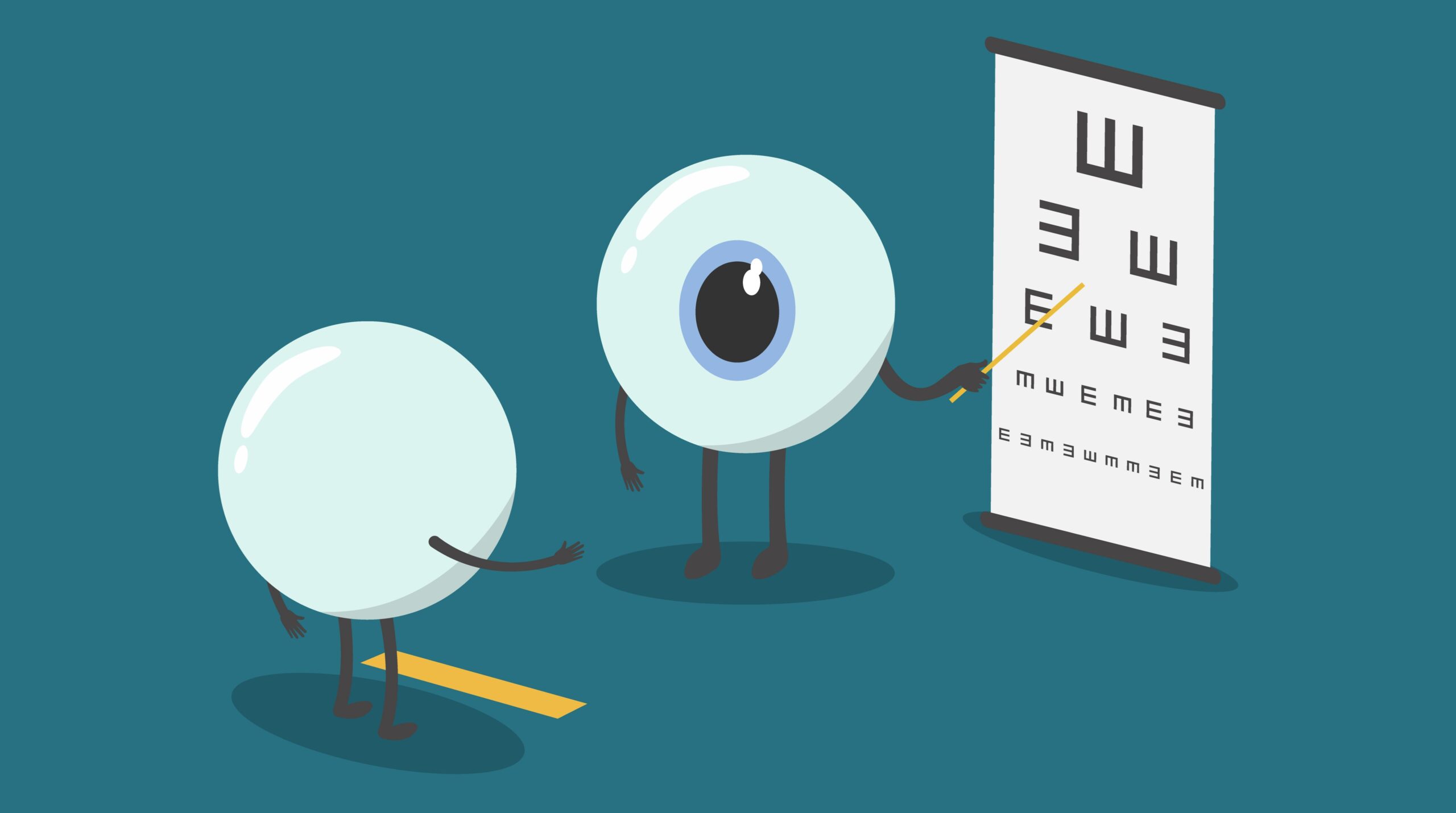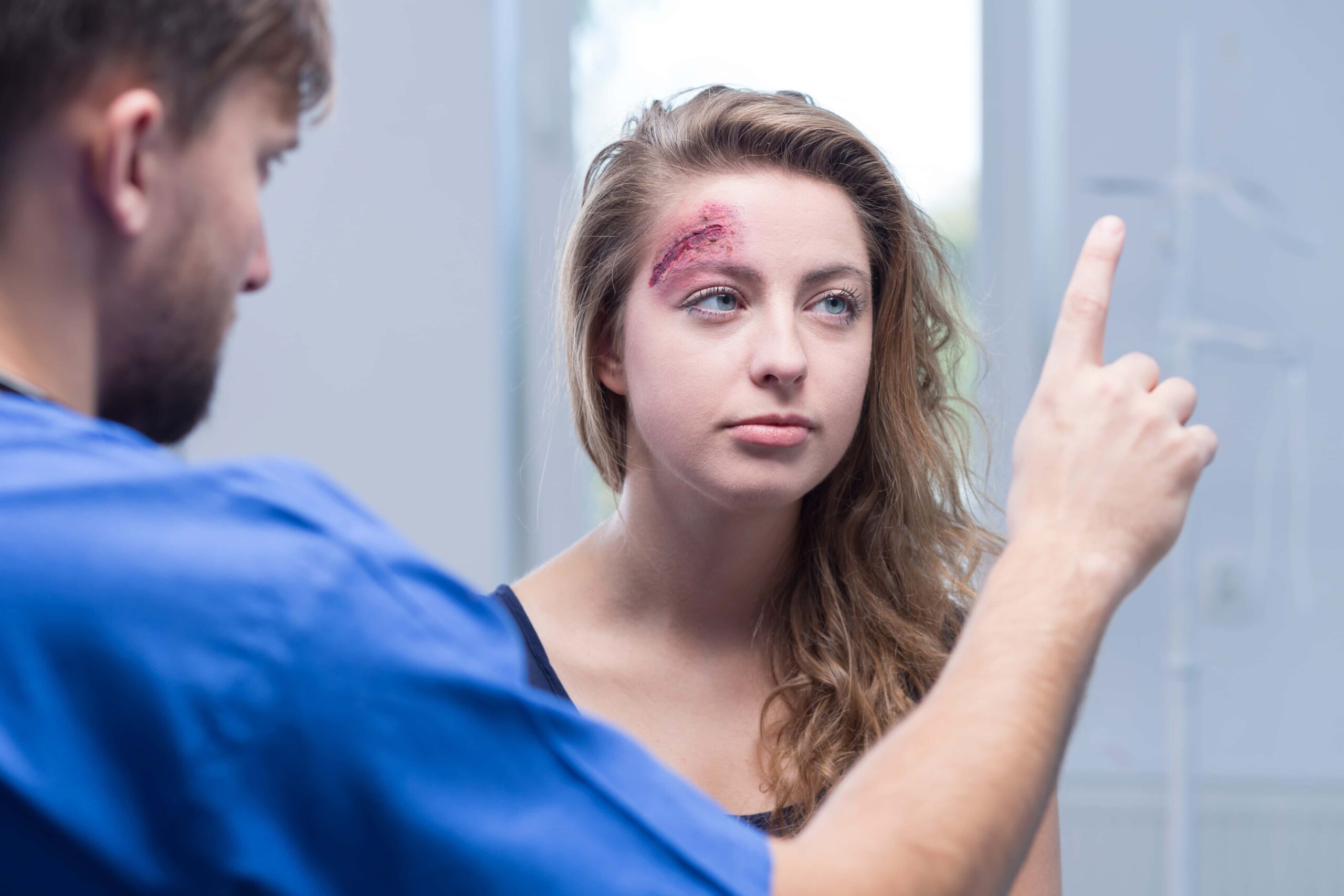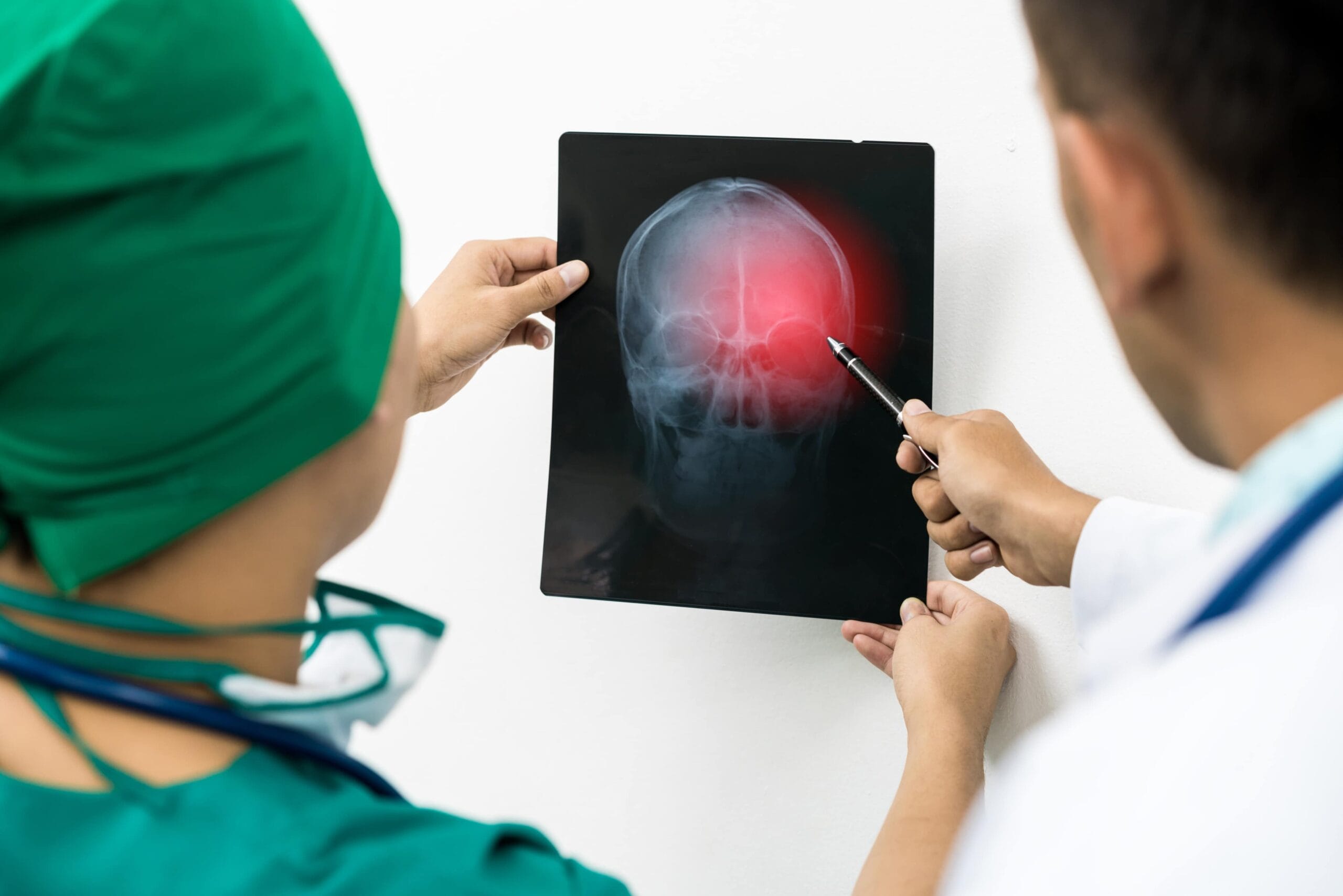Combat Arts Eye Injuries Overview
Combat sports, martial arts, and fight events have a high prevalence of eye injuries. Recent discussions for changing the shape of MMA gloves are underway in order to help lower the number of eye-poking injuries. Torn eyelid and retinal damage are other common injuries.
Eyes are delicate and require immediate intervention if an injury occurs, dirt, hair, or other foreign material are present, infection or other physical issues arise. It is important to recognize danger signs when looking at the eyes and to understand the proper response.

Eye Injury Causes

Former UFC middleweight champion Michael Bisping almost lost his vision in one eye when he kept fighting with a detached retina. Bisping finally hung up his gloves when ongoing vision problems convinced him to quit. Bisping’s crazy, long, and wild career began 15 years ago with winning “The Ultimate Fighter 3” and he just kept winning. Fans poured out the love when he finally decided to say no to one last round in the cage.
A strike to the eye, finger poke, face plant into the mat, gi material, hair or other substance rubbed into the eye can cause irritation or damage.
Eye Injuries Symptoms

Types of Eye Injuries
8.3% of all injuries in martial arts involve the eye. Eye injuries for mixed martial artists fall into three categories: Abrasions, penetrating injuries, and blunt trauma. These include: Corneal Abrasion, Retinal Tears, Ocular Fractures and Penetrating Injuries.
Don't Lose Sight of Your Ultimate Fitness Goals!
Let Us Help You Prevent and Treat Eye Injuries.
Related Injuries
The most common eye injury in martial arts and combat sports is corneal abrasion or a scratch on the eye. The cornea is the outermost structure covering the eye. Although these injuries normally heal quickly and create no long-term harm, they can be extremely painful. Deeper abrasions may cause scarring on the eye, which could create vision problems.
“They say it is worse than a kidney stone,” says Dr. Pang of corneal abrasions. “It’s a sharp, painful like a knife going into your eye, but it is really pretty minor unless it gets infected. The recovery is about 3-4 days usually.
Symptoms
To learn how a Corneal Abrasion is diagnosed, click here.
The retina is a very thin and delicate membrane containing the rods and cones required to see color, light, and dark. If that thin layer receives damage, the entire retina can detach over time. Fighters have gone blind because of this.
“A retinal detachment occurs when the lining of the eye comes off. You can think of the retina like an egg. You have an egg and you take the egg out, the whites and the yolk and then there is the very lining of the eggshell. If you have a tear in the retina it can be treated with a laser or freezing of the tear and it will scar down.
If you have an undiagnosed tear or hole in the retina fluid can go underneath it and cause it to detach. If fluid from within the eye passes through a retinal tear in it can cause the separation of the retina from its underlying tissue resulting in detachment,” says Dr. Pang.
“The only reason to stop a fight because of eye injuries would be a big laceration causing bleeding to the eye, when the fighter states he can’t see anymore, or if there is an orbital fracture,” said ophthalmologist Dr. Pierre Pang, M.D., who has worked for many MMA events on the island of Oahu as the official doctor. Dr. Pang is an eye and retinal specialist.
Symptoms
Causes
There are three types of retinal detachment. Rhegmatogenous detachments are due to aging. A hole develops in the retina allowing fluid to pass. For martial artists, over fifty this can occur without any blunt force trauma.
Tractional retinal tears occur when scar tissue is formed due to repeated injuries and this slowly pulls the retina away from the back of the eye. Exudative detachments are common in fighters since fluid accumulates under the retina due to an injury.
To learn how Retinal Tears are diagnosed, click here.
MMA veteran light heavyweight Brandon Vera knows what it means to have an orbital fracture. He suffered a tripod orbital fracture when a piece of bone went into his eye. He was elbowed in the face. In martial arts, while unintentional, it’s easy to catch someone’s arm or foot in the face. The blunt force can cause orbital bones to fracture.
Symptoms
Causes
About 85% of all orbital fractures take place by accident. A martial artist can have an orbital rim fracture where the lower eye rim part of the cheekbone or upper eye rim part of the forehead is injured. They could also experience a blowout fracture which is an indirect orbital fracture. In this case, when the catches a fist or foot, the bony rim remains intact but the paper-thin floor of the eye ruptures.
Direct orbital fractures are where both the bony rim and the socket floor are injured. You can understand more about the orbital anatomy here.
To learn how Ocular Fractures are diagnosed, click here.
Penetrating eye injuries are common in martial arts because no one wears any protective eye equipment. These injuries occur when something cuts your eye. It could be a weapon, corrective glasses, or even someone’s fingernail.
Symptoms
Causes
Fists are the most common cause of penetrating eye injuries. So blunt force followed by sharp force is the main cause of all penetrating injuries among martial artists.
To learn how Penetrating Injuries are diagnosed, click here.
Common Eye Injuries
Find out more about common injuries such as lacerations and facial fractures that can also affect the orbital area in our Common Injuries section.
Eye Injury Diagnosis
The first step in diagnosing eye injuries is the ophthalmic exam. This tests pupillary light reflex, red reflex, eye movement, and nerve functions. Following this, the doctor will use an ophthalmoscope to look into the eyes. They might even request fluoroscopy and order imaging to study the blood vessels and the bones of the orbit.
Injury Specific Diagnosis
Physical Exam
The ophthalmic exam will usually display extreme sensitivity to light, excessive tearing, and decreased visual acuity.

To facilitate the exam, a topical anesthetic is used. Extraocular movements are examined and documented.
Imaging
Lab Tests
To learn how a Corneal Abrasion is treated, click here.
Physical Exam
Regular eye exams will detect retinal tears which that heal quickly if given the proper treatment, and prevent retinal detachment. UFC Welterweight fighter Diego “The Nightmare” Sanchez has so far sustained several severe lid lacerations during his warrior fighting career. Martin “The Hitman” Kampmann has also had extreme lid lacerations, and several concussions, which have resulted in his retiring early from UFC.
Usually, when a retinal tear is suspected, visual acuity at near and distance is checked. The external examination will involve searching for signs of trauma. The ophthalmologist will also check the visual fields through a confrontation examination to isolate the location of the retinal detachment. The ophthalmoscopic exam will diagnose a retinal detachment fairly accurately.
Imaging
In most cases, an ophthalmoscopic examination is enough. However, if foreign body insertion is suspected or the doctor wants to see the real-time movement of the detached retina, an ultrasound might be advised. CT imaging can visualize folded membranes with subretinal space fluid.
Lab Tests
Blood tests like HbA1c and CBC are done to determine any underlying causes for retinal detachment like diabetic retinopathy and sickle cell disease. Since surgical intervention will be required, baseline blood tests like BMP, PT/PTT, and INR, are useful.
To learn how Retinal Tears are treated, click here.
Physical Exam
The doctor will test the extraocular movement in each eye separately, as well as confrontational visual fields. They will also do a swinging-flashlight test to rule out afferent pupillary defects, color plates, and red desaturation. While painful, they will palpate the bony rim and check extraocular movements.
Imaging
CT ‘s and MRI’s are important for detecting fractures and soft tissue injuries when it comes to the orbit.

Lab Tests
Blood tests are usually not required unless other signs of trauma are noted and a high risk of infection is suspected.
To learn how Ocular Fractures are treated, click here.
Physical Exam
The physical exam here must include palpating the orbital rim and checking for any orbital fracture. Doctors will check for any foreign body. The eyes are quickly examined without putting any pressure on the globe with the help of Desmarres retractors.
Imaging
Imaging is usually with plain film x-rays of the head and/or CT scans. These will determine the location of the injury and the presence of a foreign body if any. A CT scan will also demonstrate the shape and integrity of the traumatized globe.
Lab Tests
Blood tests are required only if surgical intervention is recommended.
To learn how Penetrating Injuries are treated, click here.
Diagnoses of Common Eye Injuries
To learn more about common eye diagnoses visit our Common Diagnoses page.
Eye Injury Treatment
In general, eye injuries need special care. They are common in mixed martial arts and contact sports where no eye equipment is used. Not all ocular injuries will require surgical treatment.
The key is getting emergent medical attention when an eye injury is suspected and following a few basic rules when an eye injury is suspected.

Injury Specific Treatment
Emergency
Saline irrigation is usually the first step to clear the eye. This will remove the foreign body. If the eye still experiences symptoms then seek prompt medical attention.
Medical
Emergency
If the tear has not progressed completely to detachment then the surgical repair will be scheduled for another date and time. However, if the retina is detached, it requires prompt surgery.
Medical
Retinal tears and detachment will almost always require surgery. These are office-based procedures and different techniques are used. For tears, laser surgery can weld the retina through photocoagulation.
Crypopexy where the tear is frozen tear can repair and secure the retina. For detachments, the surgeons can introduce intraocular gas which will push back the detached retina and plug any gaps. They can also buckle the entire eye in a belt or band called scleral buckle surgery. Alternatively, they can drain the fluid in the eye through vitrectomy. To flatten the retina, air, silicone oil, or gas is injected into the vitreous space.
Home
Following any retinal tear or detachment, martial artists are advised bed rest to avoid any activities that can further worsen the tear or cause a second detachment.
Particle, Sand, or Foreign Material in Eye:
- Never rub the eye
- Lift eyelid up gently and allow tears to rinse the eye, or use eye wash specifically formulated to for purpose to flush out the eye
- If particle or object won’t rinse out, close or lightly bandage eye and seek emergency treatment
- Do not try to remove an object that is stuck in the eye or under eyelid
—Go for emergency medical treatment
- Do not place antibiotic or other medication in or on eye
In Case of Cut or Punctured Eye:
- Never rub or apply pressure to eye, or seek to remove the object stuck in the eye
- Do NOT Rinse Eye with Water
- Protect the eye
- Do not give aspirin, ibuprofen, or other anti-inflammatory pain drugs since these may increase bleeding
- Go to Emergency room or eye specialist immediately
Chemical Burn Treatment:
Immediately flush eyes with clean water
Get emergency medical aid immediately
In Case of Blow to the Eye:
- Never apply pressure to the eye
- Place a cold pack or compress very gently over the eye to help - minimize pain and swelling
- Seek medical help if the black eye appears, pain, or vision problems occur
- Surgery is typically not required, although certain eye injuries such as orbital fractures may need a titanium plate inserted and secured to strengthen and support the bone
Emergency
Do not patch the eye. All orbital fractures require emergent care. If possible, place an eye shield. Avoid any drops or ointments.
Medical
Treatment depends on the locations and severity of the fractures. Small uncomplicated fractures will not require surgery. Severe surgeries might require reconstruction to remove bony fragments, free tapped eye muscles, repair deformities, and restore normal orbital architecture.
Home
Simple fractures will require ice packs, decongestants, and topical antibiotics. Rest and avoiding blowing ones’ nose is highly recommended.
Emergency
Do not force the eyelids open if they are closed and do not attempt to remove any protruding object from the eye. Doing so will cause extrusion of the ocular contents. Do not let the fighter eat anything.
Medical
Penetrating eye injuries require surgery. The eye is protected with an eye shield and systemic analgesics and antibiotics are administered.
Home
Following surgery, daily follow up with an ophthalmologist is advised to ensure the eye is healing well. Bed rest is recommended along with topical antibiotics to avoid bacterial super-infection.
Common Treatments
Learn more about common eye treatments visit our Common Treatments section.

